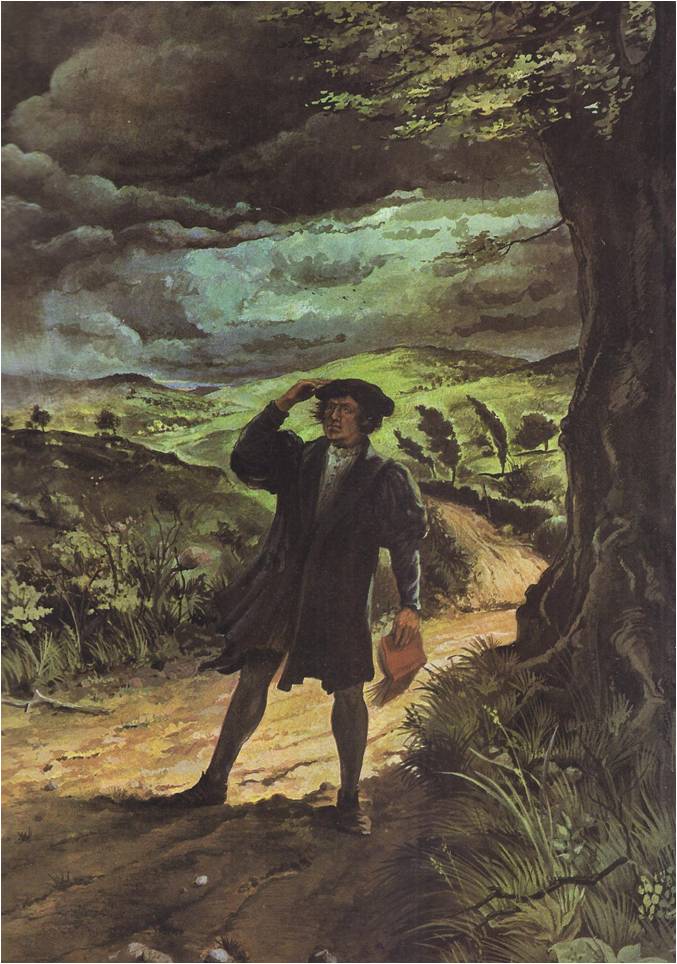ON A SULTRY JULY DAY IN 1505, a young law student, Martin Luther, was walking along a country road in Germany when a summer storm blew up. The air grew heavy and black clouds filled the sky. Before Luther could take shelter, thunder began to crash. A bolt of lightning struck the road almost at his feet. Thrown to the ground, he lay shaking, not certain whether he was alive or dead. “Help me, Saint Anne,” he cried, “help me and I will become a monk.” After a moment, Luther’s trembling stopped. He stood up, found that he was not hurt and continued his walk toward Erfurt, the town in which he attended the university. He did not forget his promise to Saint Anne. He spent a week or so thinking and making plans. Then he told his professors that he could come no more to their classes. He sold his books, bade farewell to his friends and went to the monastery of the Augustinian friars and said that it was his wish to become a monk. When Martin’s father, old Hans Luther, heard what his son had done, he was puzzled and angry. Hans had worked hard all of his life. Though his ancestors had been peasant farmers, he had managed to set himself up in a little business. But he was far from rich; he had scrimped and saved to send his son to school and to the university. He had long looked forward to the time when Martin would be a lawyer, a man of standing who would make his parents proud and earn the money to care for them in their old age. Now those plans were ruined. As a monk, Martin would never win fame or riches. Hans was furious and he wrote to Martin …
Read More »The Walls Come Tumbling Down 1300-1415
IN THE MIDDLE AGES, when knights fought wars in Europe’s fields, robbers roamed the roads and the dark forests seemed filled with unknown dangers, men put their trust in walls. Around each little town rose ramparts of massive stonework, a strong defense against the evils outside. Within the safety of the wall was a crowded little world, complete in itself — a castle‚ a church, a monastery or two, a marketplace and a tangle of cobbled streets lined with the thatch-roofed houses of townsmen. In such a town a man knew his place. He was a nobleman or a knight, a churchman, a craftsman, or a farmer and there were ancient invisible walls that marked off the little world in which each kind of person belonged. For a lord there was the realm of chivalry. He lived according to the code of knights and in time of war, put on his armour and defended the town against its enemies. In peacetime, he amused himself with hunting, banquets, poetry, music, dancing and wooing ladies in the complicated fashion called courtly love. Religion and scholarship were the territory of monks, priests and bishops. They were men who had learned to read the Bible and other books and who understood the Latin of church services. For commoners, there was work on land owned by the nobles and in shops that served the castle. It was an orderly system and it seemed as if it would never change. No peasant dreamed of becoming a knight or questioned the wisdom of the churchmen. The invisible walls, like the walls of stone around the town, were strong and old and within them a man felt safe. THE WORLD OF CHRISTENDOM The world of Europe also had its walls in the Middle Ages. To the east and …
Read More »

